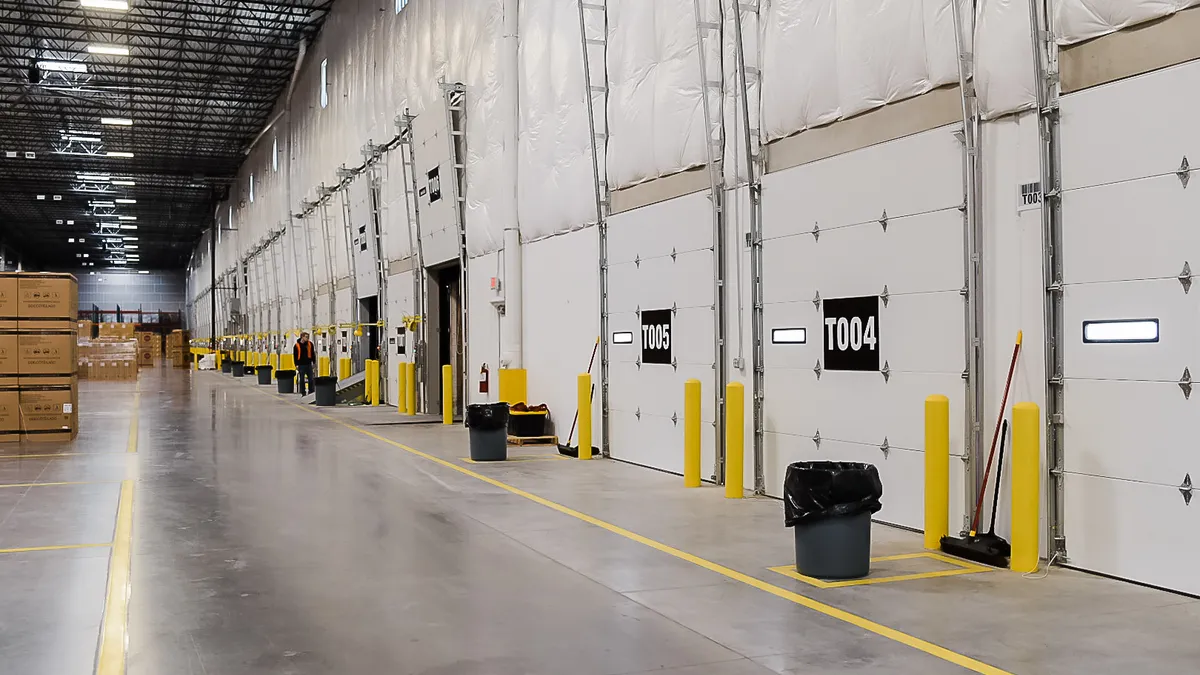Dive Brief:
- The U.S. Logistics Manager's Index (LMI) came in at 52.6% in February, according its latest report. The sector remains in growth territory but at the slowest rate seen in the index's 42 months of reporting. Any result above 50% indicates growth, while a result below that amount shows contraction.
- "[The] score is being drive[n] by a contraction in inventory levels. Generally we don't see inventory levels going down in February, so the fact that they are is a little surprising," report co-author Zac Rogers, Ph.D., assistant professor of supply chain management at Colorado State University, told Supply Chain Dive via email.
- The report saw warehouse capacity up six percentage points from January as firms work through post-holiday inventory stockpiles. However, the sector's ability to wait out production and shipping slowdowns in China due to the novel coronavirus, COVID-19, won't be seen for some months as the outbreak continues to spread.
Dive Insight:
These results come against a conflicting backdrop in the U.S. economy. Domestic manufacturing has been on the decline and recent signs of recovery have been threatened by coronavirus disruptions, while the non-manufacturing sectors report higher levels of growth over the same period.
The Institute for Supply Management's non-manufacturing index (NMI) came in at 57.3% in February, compared to the purchasing managers index (PMI) reading of 50.1%. Both indexes had decreased from January levels due to ongoing trade and coronavirus concerns.

"Most [non-manufacturing] respondents are concerned about the coronavirus and its supply chain impact," Anthony Nieves, chair of ISM's Non-Manufacturing Business Survey Committee, said in a statement. "They also continue to have difficulty with labor resources. They do remain positive about business conditions and the overall economy."
This month, LMI researchers broke out index changes in warehousing and transportation by similar categories — upstream actors (manufacturers, 3PLs etc.) and downstream actors (retailers and customer-facing businesses).
"It's interesting that upstream firms see contraction in their inventories and transportation prices ... while downstream firms actually see things going up," Rogers said. "Upstream firms are further up the supply chain and therefore closer to where the virus is spreading from. Whether this impact will be contained upstream or trickle down to the consumer facing firms is something we'll be tracking."
This concern was echoed in ISM's PMI and NMI reports in February which indicate the full effect of the coronavirus on global supply chains and operations has yet to be felt in the U.S.
A positive sign in the LMI report however is that transport utilization is seeing growth, up 4.8 percentage points after two months of decline. Capacity has decreased slightly, down 2.4 percentage points from January, but remains in growth territory at 55.1%, according to the report.
Warehousing and transportation prices are down, 3.9 and 1 percentage point respectively.
"This may be partially attributable to the influence of the Coronavirus," the report says, however, it found survey respondents are optimistic about the need for increasing transportation services and warehousing space as shipments normalize later in the year.
















